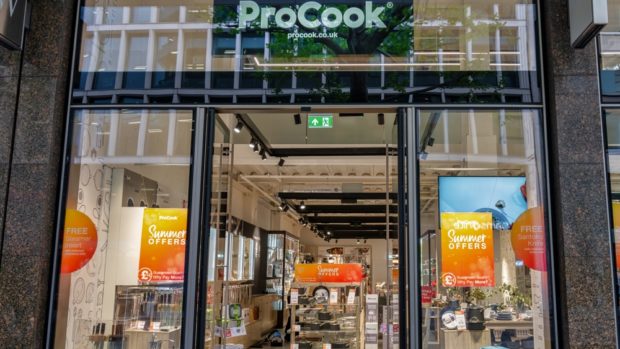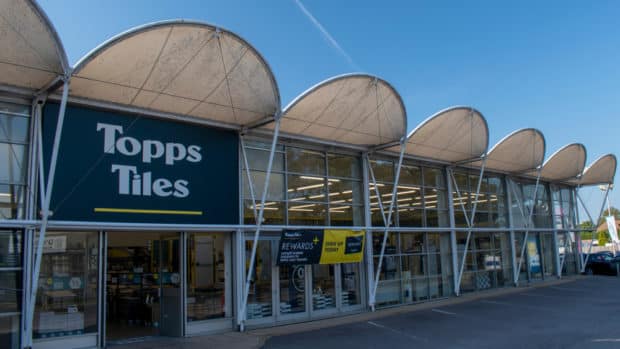When he acquired discount-fashion etailer Koodos late last year,
chief executive Harvey Sinclair said he wanted to transform the
business into a members-only, secret-sales website. Six months
later, his vision is close to being realised as, at press time,
Koodos was preparing to unveil its new proposition.
Still a relatively young concept, the popularity of secret-sales
sites is quickly gathering momentum. In a nutshell, secret-sales
sites can be defined as websites that sell branded merchandise
exclusively to site members via limited period, timed events.
Usually, consumers can only sign up via invitation from a friend
who is already a member. In contrast to traditional online shops
that allow the passing web user to browse their wares, the
offering on a secret-sales website is hidden from the general
public.
According to Sinclair, “being able to access an uncluttered
branded offering is a pretty compelling proposition [for the
consumer]. The UK is a little slow to adopt this trend due to a
strain on supply, however, we are now catching on. This is a
great time for secret-sales websites.” He’s not wrong. The
main players in the UK are usually identified as
Vente-Privee.com, Secretsales.com, BrandAlley, and Cocosa.
Leading the charge is Vente-Privee. Founded in France in 2001,
Vente-Privee has since launched in the UK, Germany, Spain, and
Italy. In 2009, Vente-Privee reported a turnover of £610
million, for 2010 it is predicting a growth of 25 percent.
Vente-Privee has 9.7 million European members in total, of whom
300,000 are UK-based-up 200 percent from this time last year. The
UK business is one of Vente-Privee’s star performers in terms of
growth-it is predicted to deliver a sales increase of 167 percent
this year and reach turnover of £7.2 million. Bunty Stokes,
Vente-Privee’s UK country sales manager, is modest about the
concept’s success, “online is still in growth anyway, so we
have to put some of the popularity down to the increased
acceptance of shopping online. That said, what ‘private sales’
offer is an opportunity for the customer to have access to deals
which are not likely to exist through other
channels”.
Another example is Secretsales.com. Founded in the UK in 2007, it
attracted a “multimillion pound investment” from
German rival Brands4Friends.de in February. “Since the
start of 2010 we’re seeing a huge uplift in both consumer
confidence and their understanding of the benefits of this
model,” says Secretsales.com’s chief executive Nish
Kukadia. To facilitate its growth plans following the
acquisition, the business is recruiting more UK-based staff and
is pushing ahead with a brand and press campaign to promote the
site.
Luxury for less
The attraction for consumers is obvious-members can buy luxury
merchandise at considerably lower prices without having to travel
to outlets or wait in line at sample sales. The
“secret” element of belonging to a members-only club
has an appeal too in that consumers are getting access to
something exclusive. Some sites, like Vente-Privee for example,
allow anyone to sign up to their deals. Others, like Cocosa, are
strictly invitation-only. Secretsales.com currently allows anyone
to sign up, but “we will be looking to close the membership
gates at some point in the future to improve the exclusive
private environment,” says Kukadia.
And it’s not just luxury items that can work in a members-only
environment. Harvey Sinclair plans to make Koodos a private-sales
club focusing on the lifestyle and leisure sector-Koodos will
sell branded country and activewear, hotel breaks, and
experiences like golfing breaks. Bunty Stokes says,
“ultimately, it you are a brand with a customer following,
then the private-sale method is definitely a discrete way to
dispose of excess inventory”.
“The exclusivity element is often more for the sake of the
brands, who want to keep discounting quiet,” says retail
consultant Leon Bailey-Green of the Online Fashion Agency. For
consumers, “it’s socially acceptable to actively seek out
bargains”.
DIY secret sales
Bailey-Green believes that the UK’s “big four” have
the market covered and that there won’t be many more new entrants
into this sector. However, that’s not to say retailers can’t set
up their own secret-sales vehicles. Marc Osofsky, vice president
of marketing at US-based ecommerce services provider Optaros,
notes that in the US, retailers Saks, Neiman Marcus, and
Nordstrom have already added secret-sales outlets to their sites.
In the UK, we have seen examples from apparel cataloguer Wall,
and preppy clothing retailer Jack Wills, using invite-only
sections of their websites to promote limited-time sales.
A final word of warning: Think long and hard about your return
policy before you forge ahead with secret sales.
“Secret-sales sites tend not to accept returns unless the
merchandise is faulty,” says Osofsky. “Mainline
retailers have a hard time telling their customers that they
cannot return an item. If allowed, secret-sales sites can
generate some very high return rates due to items not fitting
correctly once received.” In most cases though, the
secret-sales model can be highly attractive to your customers as
well as an efficient means of liquidating overstock at a decent
margin.
The DNA of secret-sales sites
According to Optaros’s Marc Osofsky, private-sales clubs share
many common traits that have become best practice. They
include:
Viral invitations-customer acquisition is driven
through people inviting their friends, reducing “the
traditional customer acquisition cost of SEO, paid search and
affiliates,” writes Osofsky on Optaros’s blog.
Cart reservation-secret-sales sites must weigh
up the pros and cons of allowing users to save baskets and
increase average order values, versus the risk that users will
hoard product in their baskets depriving other customers.
Order stays open for a few hours-similar to the
point above, if users are forced to check out quickly, retailers
face the prospect of complaints due to multiple same-day delivery
charges. “Advertising that free shipping is available for
additional items purchased within a given number of hours builds
goodwill, increases order volume, and most importantly, does not
create disgruntled shoppers,” suggests Osofsky.
No site search-secret-sales sites don’t usually
have a site-search facility, though they may have filters for
size or colour.
One page event list-secret-sales sites tend to
list all their sales events on one page whereas a traditional
retailer would make use of a number of pages, categories, and
subcategories to display its merchandise.
Sales events always start at the same
time-“it is important to train customers to come
to your site at the same time for each sale to start. This
maximises the impulse purchases, the rate of product sellout and
converting return visitors,” advises Osofsky. This puts a
strain on the IT department, however, which would much prefer
traffic to be staggered over a period a of time.








Share